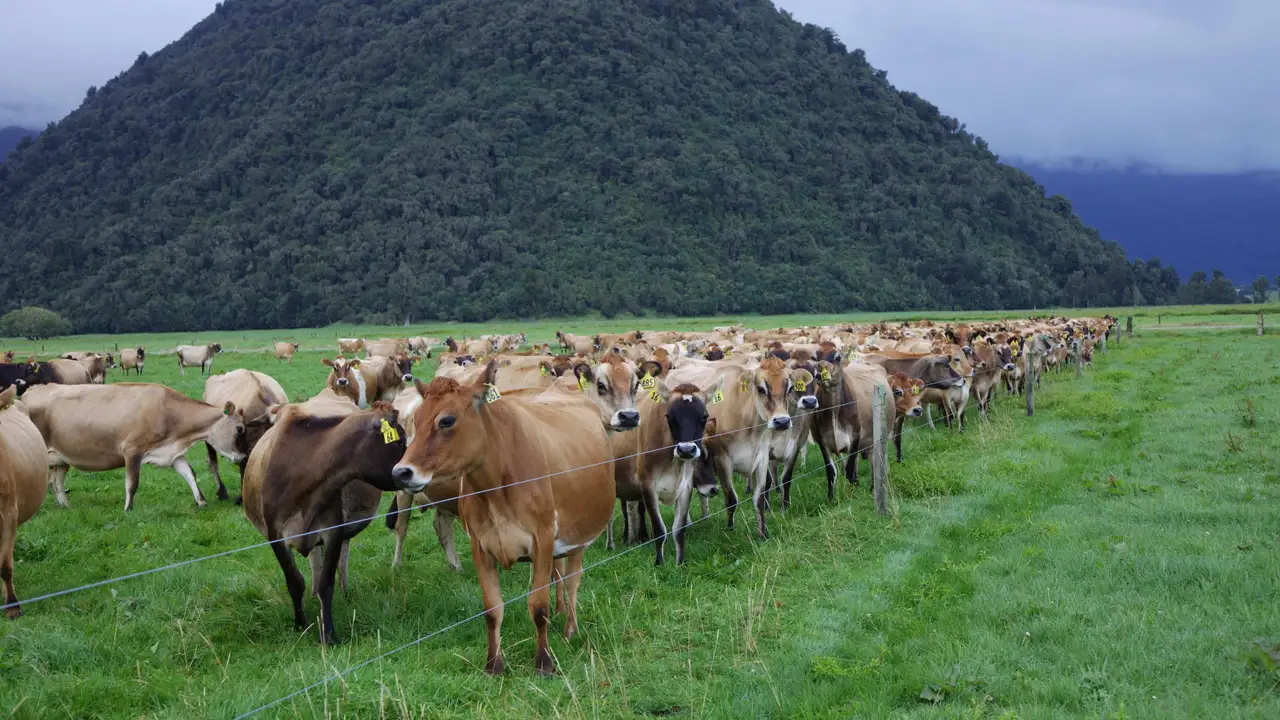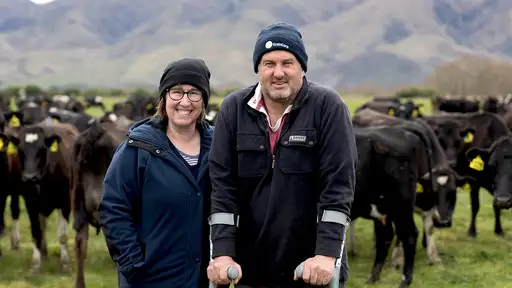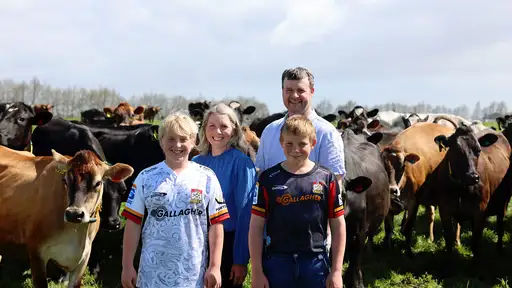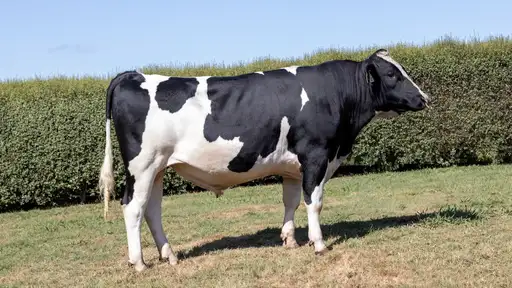
As a dairy farmer, you know the importance of keeping your herd healthy, productive, and profitable.
But there’s a silent threat that might be undermining your efforts – Johne’s disease.
It’s a disease that is already present on most farms and often stays hidden for years, impacting not just the sick cows you see, but the productivity and profitability of the entire herd. While Johne’s disease is more prevalent than many farmers realise, the good news is that the tools and knowledge to fight back are available.
Testing and culling is a good step in taking control, but a range of strategies will be required to effectively manage the disease. The DairyNZ toolbox[1] offers a comprehensive set of resources. From best practices in biosecurity to herd management strategies, these tools are designed to help you stay ahead of the disease.
The cost of control vs. the cost of disease
In 2014, the cost of Johne’s disease to the dairy industry was estimated at $40-88 million per year. Today, that figure is likely to be much higher. It is easy to underestimate the true cost of Johne’s, when thinking only of the obvious losses from a few clinical cases. However, the hidden costs can be even more devastating.
The Johne’s “iceberg” model is a fitting analogy. The clinical cases you see are just the tip of the iceberg. Below the surface, there’s a much larger problem—subclinical infections that impact milk yield, fertility, and overall herd health.
Research both in New Zealand and internationally shows that cows testing positive for Johne’s antibodies, even without clinical signs, produce significantly less milk and have reduced fertility and higher somatic cell counts[2]. These cows are eating more but not converting that feed into milk or future calves because their bodies are fighting an infection. This energy drain can silently eat away at your farm’s efficiency.
The long-term impact of today’s decisions
Calves may be infected by ingesting the Johne’s bacteria (Mycobacterium avium subspecies paratuberculosis, or MAP) from the faeces of adult animals, from colostrum containing the bacteria, or in calf-rearing sheds from transient shedding by other infected calves[3]. One of the most challenging aspects of managing Johne’s disease is its long incubation period after exposure to calves. Because of this feature of the disease, and the long survival of the bacteria in soil and effluent, it’s important to realise that the decisions you make today will impact your herd’s Johne’s prevalence for the next five to six years.
What puts your herd at greater risk?
Johne’s disease doesn’t affect all herds equally. Stress is a major factor; cows under stress have weakened immune systems, making them more susceptible to infections like Johne’s. Environmental factors such as higher rainfall, lower temperatures, and lower sunshine hours also play a role, as they create conditions where MAP can survive longer in the soil and effluent.
Effluent spreading is a common (and in some areas, required) practice, but it can contribute to the spread of Johne’s if not managed carefully. Pre-weaned calves are particularly vulnerable to infection, and their exposure to pasture contaminated by adult faeces or effluent should be minimised to protect the future of your herd.
There is a genetic component to Johne's risk, with some cows and breeds being more at risk than others[4]. Bringing in animals from untested sources can introduce infection to your herd that could take years to control, so ask for a Johne’s testing history when purchasing replacements.
The silent transmission: dam to daughter
Johne’s disease has a unique and insidious way of spreading within herds— a daughter can be infected by her dam years before the dam shows any signs of the disease[5]. This makes breaking the Johne’s cycle by preventing calf exposure a top priority.
Testing: the first step toward control
Testing for Johne’s disease is an important part of a control programme, yet it’s still not widely practiced. Across regions, only up to 27% of LIC registered dairy herds have ever participated in whole-herd Johne’s herd test milk antibody testing through LIC. Without regular testing, it’s impossible to know the true extent of Johne’s in your herd, and MAP-shedding cows can’t be identified until they have already put young stock at risk.
To reduce the level of Johne’s disease in your herd, it’s necessary to remove the source of infection (shedding cows) and prevent further transmission. If shedding cows are not removed, they may become ‘super-shedders’[6], releasing large amounts of bacteria onto pasture and effluent. Risky cows can be identified either by antibody testing on herd test milk or serum, or by faecal testing for MAP; once identified, it’s strongly recommended that shedding cows be removed from the herd to prevent environmental contamination. Talk to your vet about testing options.
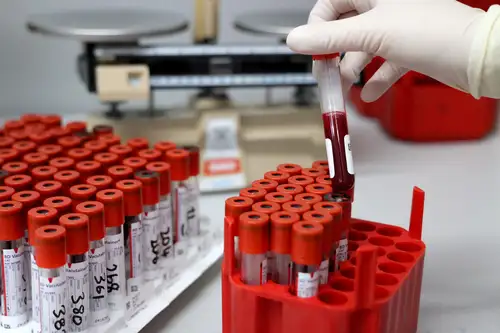
Testing should be a commitment, not a one-off event, and should be seen as part of a control programme, not as a solution in itself. An annual test over a minimum of five to six years, combined with best practice in biosecurity, and protection of replacement calves and heifers from exposure to contaminated pasture or colostrum, is the best approach to controlling the disease.
An additional pre-mating test for high-risk animals can also be a valuable tool. Identifying and managing these animals before breeding high-value replacements from them, or using them as embryo transfer recipients, can help break the cycle of transmission.
The challenges of early detection
One of the most frustrating aspects of Johne’s disease is the difficulty in detecting it early. No accurate test exists for animals under two years old due to the disease’s long latent period. Infected animals only show up on tests as rising two-year-olds if they’ve had an extremely high infecting dose earlier in life, or are under significant stress.
LIC is exploring all options for early detection, with ongoing research both in New Zealand and overseas. Any advancements in early detection will be quickly adopted to improve our ability to manage Johne’s disease more effectively.
Taking action
Johne’s disease is not a problem that will solve itself. The decisions you make today will shape the future of your herd for years to come. By taking proactive steps — testing, culling, improving biosecurity, and preventing transmission — you can protect your herd’s health, productivity, and profitability. Remember, it’s a marathon, not a sprint.
Don’t wait until the problem is too big to manage. Talk with your veterinarian, use the tools available, such as the DairyNZ toolbox, and take control of Johne’s disease before it takes control of your herd.
NB: This article first appeared in Dairy Exporter’s October 2024 issue.
[1] https://www.dairynz.co.nz/media/gyibqbzc/animal-johnes-disease-management.pdf
[2] https://actionjohnesuk.org/the-disease/
[3] https://www.cafre.ac.uk/business-support/agriculture/dairy/dairying-technical-support/johnes-disease-in-calves/
[4] https://www.frontiersin.org/journals/veterinary-science/articles/10.3389/fvets.2021.718987/full
[5] https://www.sciencedirect.com/science/article/abs/pii/S0167587718300394
[6] https://bovine-ojs-tamu.tdl.org/AABP/article/view/4857
